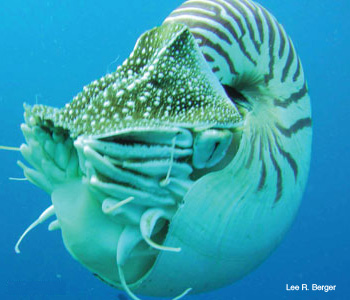Light Touch
The Eye in the Spiral: Animals with Pinhole Visual Systems
Most organisms have evolved precise, camera-like visual systems that allow them to easily find food and escape danger. But a few still rely on lensless eyes with crude pinhole optics. Why?
 Nautilus from the side.
Nautilus from the side.
Evolutionary biologists have postulated that the visual systems of most animals began as light-sensitive patches of cells. These areas eventually became further specialized and were enclosed as simple pinhole structures. Finally, over time, pinhole optics were displaced by more sophisticated visual systems that included lenses, which can concentrate more light and produce detailed images. Following this developmental sequence, vertebrates and cephalopods independently evolved eyes with the same general structure as one another, including a cornea, iris, lens and retina within a spherical capsule.
…Log in or become a member to view the full text of this article.
This article may be available for purchase via the search at Optica Publishing Group.
Optica Members get the full text of Optics & Photonics News, plus a variety of other member benefits.
